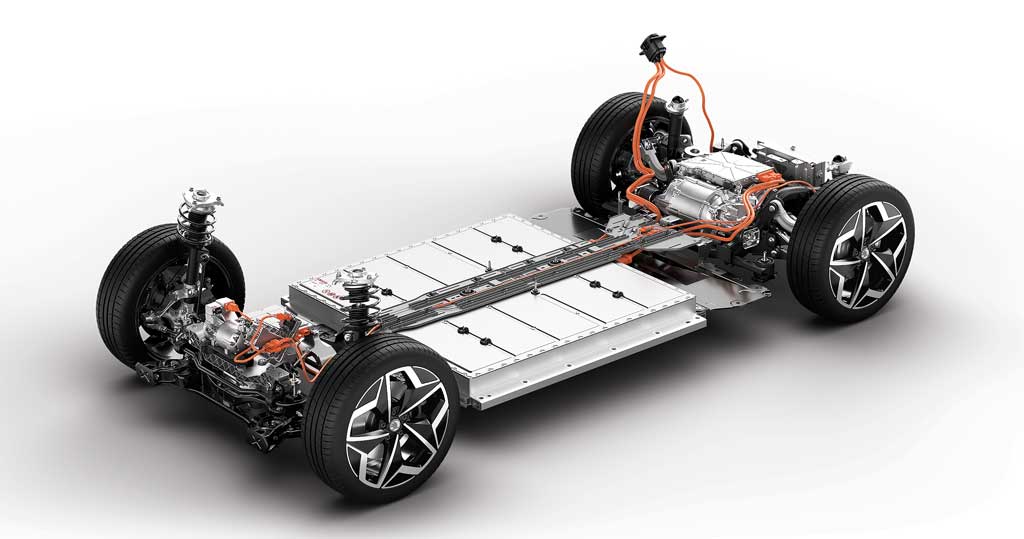

For most small and medium hatchbacks and SUVs, front-wheel drive (FWD) has long been the norm, yet many new dedicated all-electric cars are seemingly reverting back to the classic rear-drive layout. New EV models created as purely electric cars from the outset, like the BMW i3, the Tesla Model 3, the Hyundai Ioniq 5, and Kia EV6, and of course the new Volkswagen ID. range of EVs, have all opted to place the power unit at the rear, driving the rear wheels. Tesla play the tunes with powerplant positioning, and drive, using RWD and AWD, but no Teslas use FWD. But then there’s the Nissan Ariya, and its recently revealed cousin, the Renault Megane E-Tech, and Mazda with the MX-30 have chosen the FWD route, with a front-located power unit. Why the split-decision on such key design principles? Surely one must be better than the other?
Well, with few exceptions, like the Hillman Imp, the Beetle, and the more recent Renault Twingo, most power units have been located at the front, leaving designers a choice of driving the front wheels, or using a prop shaft to drive the rear wheels. Both RWD and FWD layouts have both critics and supporters, but it’s really a case of fitness for purpose. Driven front wheels save space, and avoid long prop shafts, but have to cope with the tasks of both steering and power delivery, compromising both functions. For such reasons prestige car companies like BMW, Mercedes-Benz, and Jaguar stuck to RWD for their larger models, where cabin space was no great issue. But many RWD cars had a tendency to be tail-happy on slippery surfaces, and even lose rear end grip when too much power was fed to a lightly loaded rear axle. BMW compensated for this by achieving near 50/50 front/rear weight distribution, placing the engine as far behind the front axle as possible, and locating the heavy battery beneath the boot floor. They felt that the purity of tactile steering, uncorrupted by drive power, and the superior handling of 50/50 weight distribution justified the loss of some space. The arrival of Electronic Stability Control technology in the early 90s, that tamed most RWD car grip shortcomings, further strengthened their argument.
But electric motors are physically much smaller and lighter than petrol and diesel engines, allowing them to be located at the rear, often without seriously compromising the cargo space, and allowing RWD configuration, with a near ideal weight distribution. The compactness of the electric powertrain has simply changed the game. Gone is the huge weight of a petrol or diesel engine, clutch, and gearbox, replaced by an electric motor, its power electronics and charging electrics, together weighing less than a third of the heaviest single EV component, the traction battery. This is located low down, usually beneath the central and rear cabin floor, creating a low centre of gravity, along with a low “moment of inertia,” which together improve vehicle stability. It leaves space for the main electrical drive parts to fit comfortably between the rear wheels, whilst the removal of rigid, and costly powertrain components to the rear increases the effectiveness of front crumple zones and the ability to absorb energy in frontal impacts. Arguably it’s the best of both worlds, with the power unit directly over the driven wheels, and it offers the potential to locate a second power unit at the front creating a 4WD variant, as many have done. This delivers the combined benefits of almost perfect weight distribution with the electronically controlled power delivery spread over four wheels, for optimum traction at all times. Some manufacturers also add a mild touch of rear wheel steering, where the steered wheels turn one way at low speeds, improving the turning circle of larger models, and turn the opposite way for improved stability at high speeds.
The evolution of the EV is certainly at an interesting stage, and time will tell which way things go. Our betting would be that all the next generations of larger “pure” EVs will generally choose RWD, often with a 4WD option, whilst smaller pure EVs, when they arrive in larger numbers, as surely they must, may well take the opposite route of FWD, for the traditional reasons of maximising cabin and cargo space. Then again, we have the revolutionary possibility of direct drive, motor-in-wheel technology, of which we shall inevitably hear more about in time…
© Motorworld Media 2023
Registered Office: 4 Capricorn Centre, Cranes Farm Road, Basildon, Essex. SS14 3JJ
Company Number: 8818356
Website designed by Steve Dawson